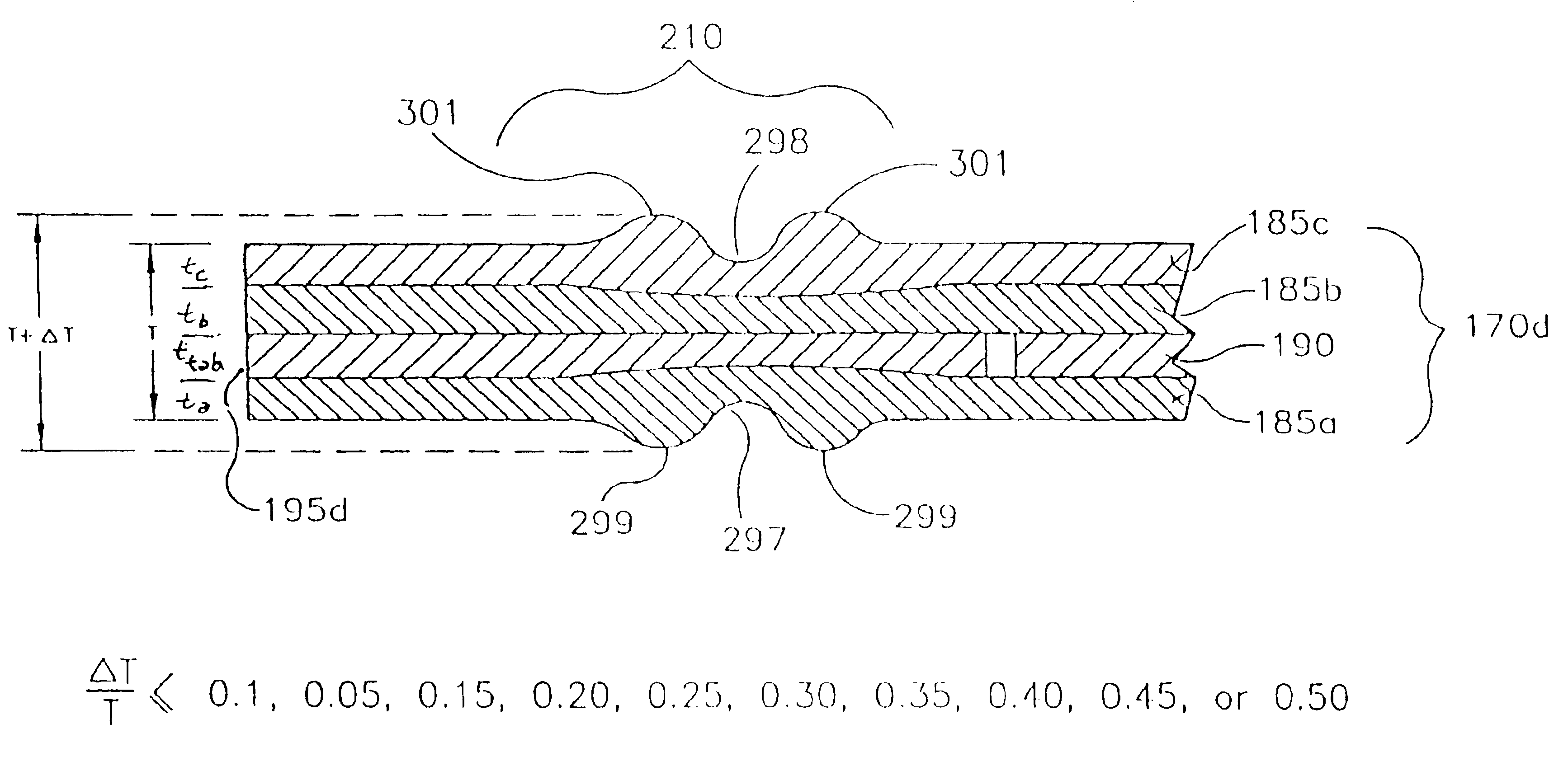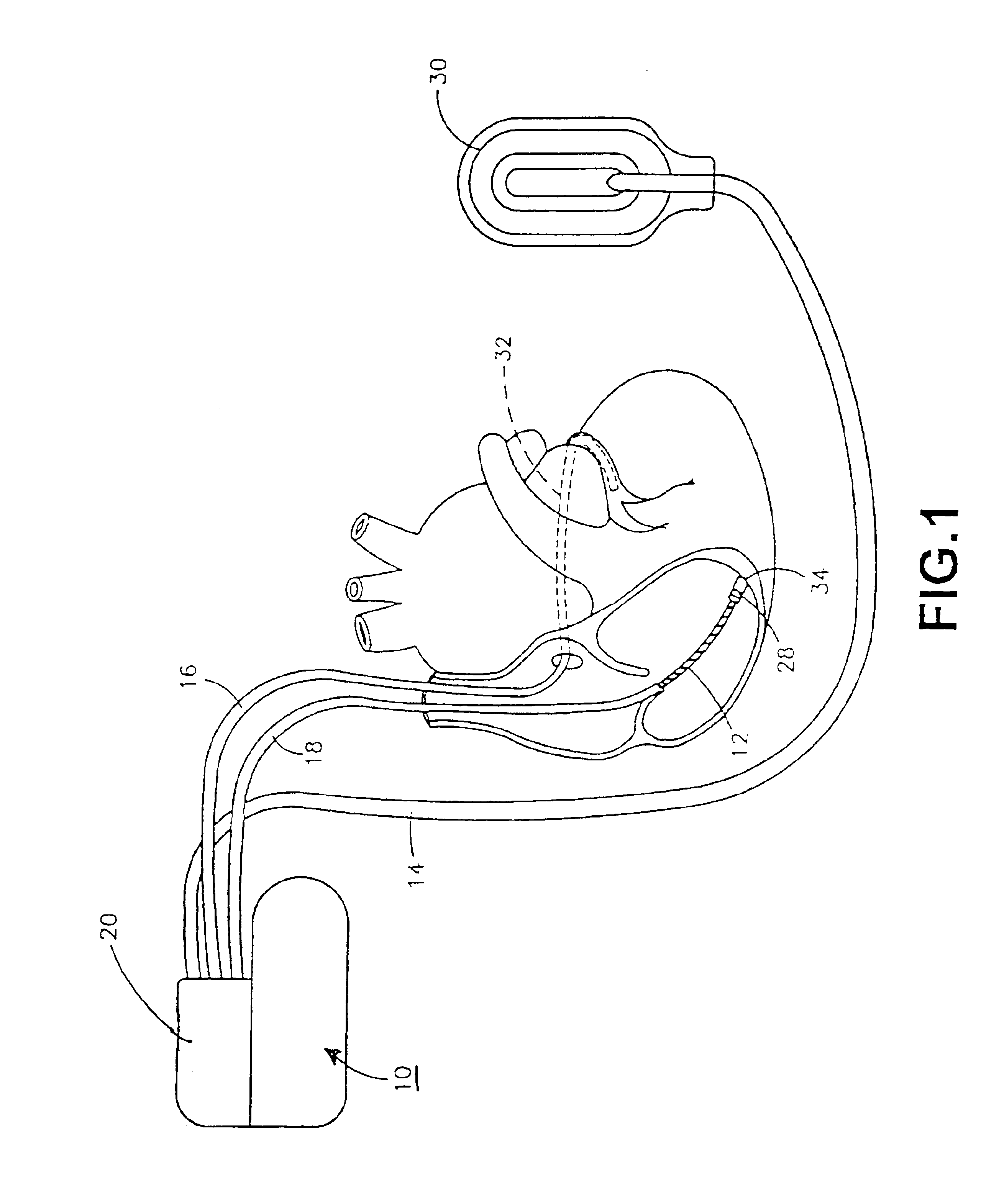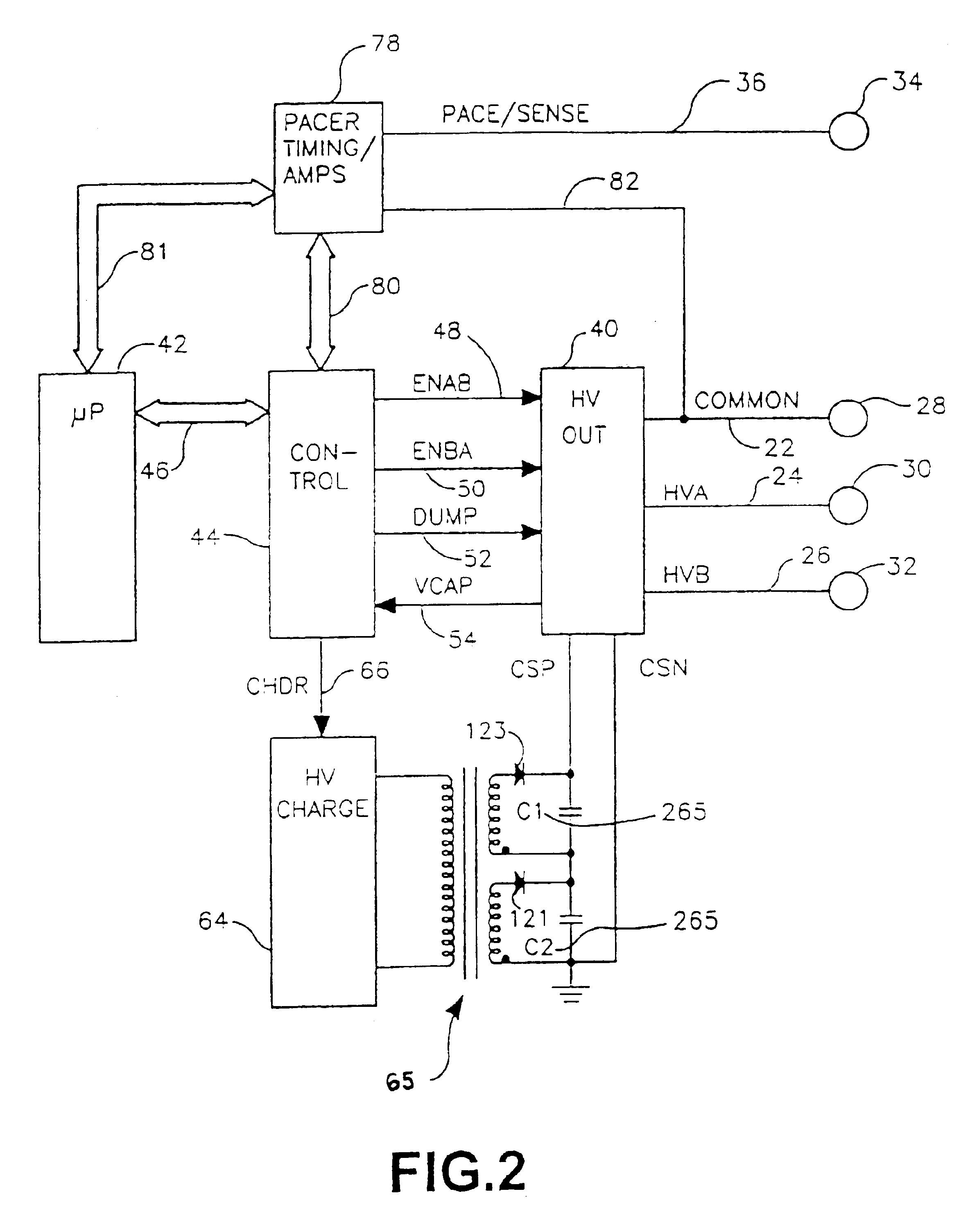Implantable medical device having flat electrolytic capacitor with differing sized anode and cathode layers
an electrolytic capacitor and flat technology, applied in the field of implantable medical devices, can solve the problems of inability to achieve cardioversion/defibrillation shocks, battery(s) and high-voltage capacitor(s) used to provide and accumulate the energy required for cardioversion/defibrillation shocks, and the reliability of capacitors cannot be compromised, so as to achieve the effect of maximizing the surface area of the anode electrod
- Summary
- Abstract
- Description
- Claims
- Application Information
AI Technical Summary
Benefits of technology
Problems solved by technology
Method used
Image
Examples
case liner 300
[0137]Case liner 300 is made of an appropriate thickness of electrically insulating material depending upon the mechanical design of electrode stack assembly 225, the amount of separator layer overhang, the desired distance D1 separation between electrode stack periphery 226 and the case side wall surface 92, etc. In one embodiment liner wall thickness is in the range of 0.001 to 0.100 inches (0.025 to 0.254 mm) and more preferably in the range of 0.003 to 0.005 inches (0.075 to 0.127 mm). Liner wall thickness is also a function of the type of insulating material from which liner 300 is made.
[0138]In one embodiment, liner 300 is made of a polymeric material or polymeric blend of materials, and in one preferred embodiment the polymeric material is polysulfone. Other suitable polymeric materials include polypropylene, polyethylene and ETFE. Optionally, liner 300 can be formed of other insulating materials, such as those materials previously disclosed herein for construction of the wir...
PUM
 Login to View More
Login to View More Abstract
Description
Claims
Application Information
 Login to View More
Login to View More - R&D
- Intellectual Property
- Life Sciences
- Materials
- Tech Scout
- Unparalleled Data Quality
- Higher Quality Content
- 60% Fewer Hallucinations
Browse by: Latest US Patents, China's latest patents, Technical Efficacy Thesaurus, Application Domain, Technology Topic, Popular Technical Reports.
© 2025 PatSnap. All rights reserved.Legal|Privacy policy|Modern Slavery Act Transparency Statement|Sitemap|About US| Contact US: help@patsnap.com



